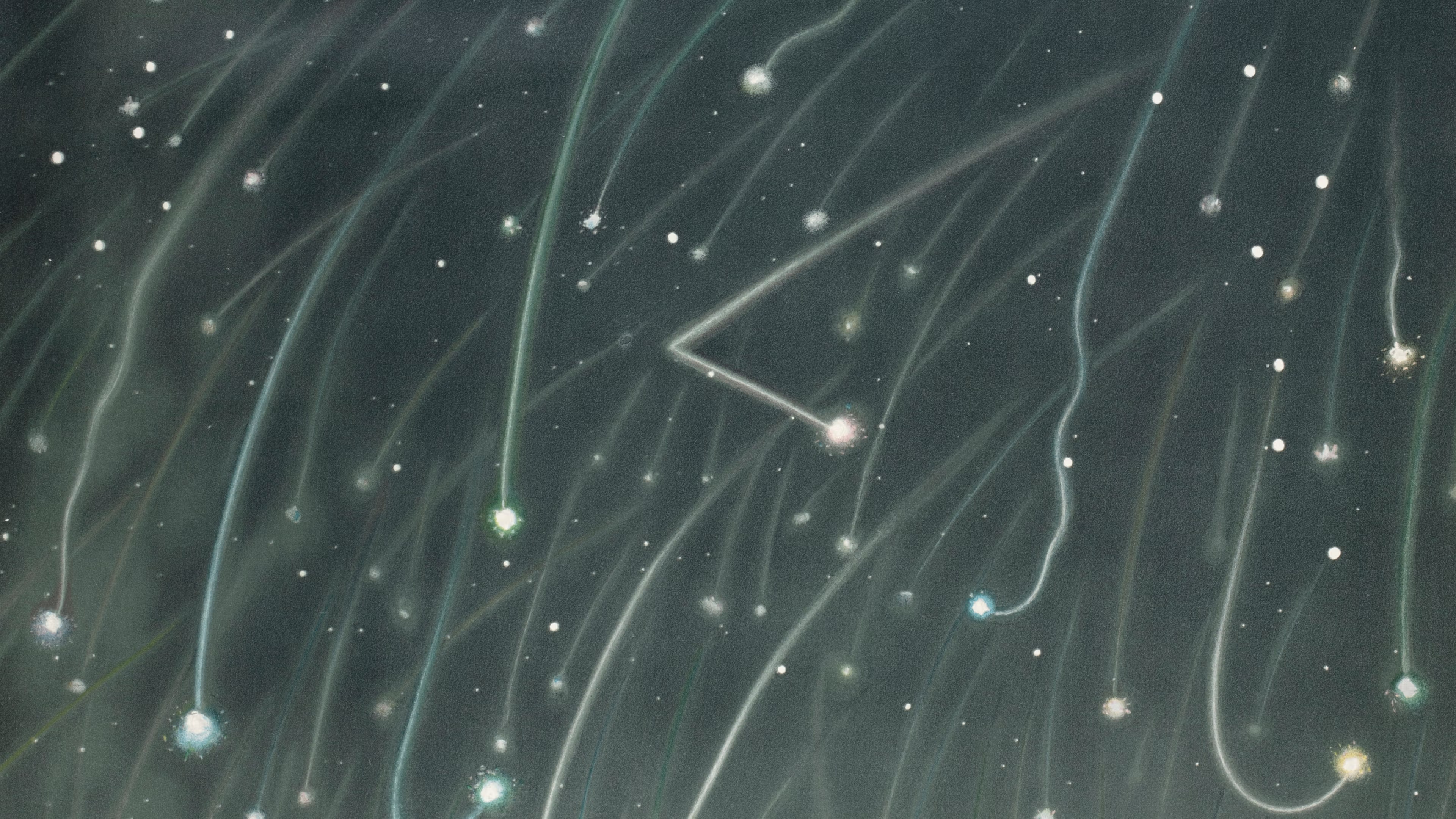
Contemporary art in historical rooms
'Cosmos' exhibition at Teylers Museum
Friday 22 November 2024
A large floating satellite by Trevor Paglen in the oldest museum room in the Netherlands, or Yinka Shonibare’s 'Refugee Astronaut' placed among the fossils: the exhibition 'Cosmos', on display from 14 February up to and including 29 June 2025, presents contemporary art in the historical rooms of Teylers Museum. This fusion of old and new, and of art and science, shows that imagination is key in gaining a better understanding of the universe.
Navigation
Human beings have been living with the stars since the beginning of time. For millennia the night sky served to navigate the seas and formed a beacon of stability. Until now. Today, 99% of Europeans live under a light-polluted sky. The stars are hardly visible anymore. Our relationship with the universe has drastically changed. How does this affect human beings?
Writer and theatre maker Marjolijn van Heemstra, artist in residence and co-curator of the exhibition, has been pondering this question for a long time: ‘The stars have been guiding people for thousands of years. You only have to take one look at the stars to know exactly where you are on earth. I think that is a fundamental human experience.’
Curator Rieke Vos: ‘The night sky filled with stars is not only a wonderful thing to behold, intriguing to just about everyone. It is also a source of inspiration for major questions, for giving meaning, and for scientific endeavours. It momentarily elevates us from our everyday lives, as it were. How can we restore our relationship with the stars? That is what this exhibition is about.’
Astronomy
Since its foundation in 1784, astronomy has been an important field of research to Teylers Museum. Above the Oval Room you will find an astronomical observatory, and the collection contains several planetariums and telescopes. Among these is a large reflecting telescope made by William Herschel (1738-1822), the sametype he used to discover Uranus in 1781. Martinus van Marum, the museum’s first director visited Herschel in England. After looking at the galaxy through one of the astronomer’s telescopes he was so impressed that he purchased one and took it with him to Haarlem. Rieke Vos: ‘William Herschel was an extraordinary man. His discovery made him a world-famous astronomer, but up to that point he earned a living as a musician. In his letters he described how he read the stars like a musical score, searching for the melody instead of the separate notes. And that is how he discovered Uranus. An inspiring example of how art and imagination are key to making new discoveries and arriving at new insights.’
Art and science
Art and science have more in common than is often thought. Cosmos shows how imagination was a vital ingredient for arriving at new insights in the 18th and 19th centuries. But even today, at a time when new telescopes are looking deeper and deeper into the universe, artists highlight the importance of not losing sight of the bigger picture. In Cosmos, for example, Trevor Paglen focuses our attention on the busy satellite traffic in the atmosphere, Yinka Shonibare shows a climate refugee floating through the cosmos, Katie Paterson reminds us that we are all made of stardust, and the new artwork Saskia Noor van Imhoff created for the museum makes us aware of the things we can no longer see now our surroundings are increasingly flooded with light. Cosmos unites art and science in a way you have never seen before at Teylers Museum.
Publication
The exhibition is accompanied by a book, published by Jap Sam Books, which includes new poems and essays by Marjolijn van Heemstra. During her residency at the oldest museum of the Netherlands she found inspiration in lunar photographs, star globes, and planetariums from its collection.

Etienne Trouvelot (1827-1895), Chromolithography from The Trouvelot Astronomical Drawings Manual (1882).
Collection Teylers Museum.
For more information and/or images, please contact Heleen van Halsema, marketing & communications department, Teylers Museum: hvanhalsema@teylersmuseum, +31(0)23-5160971